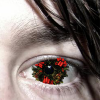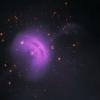Looking at faraway stuff
-
Show networks
- https://www.facebook.com/patrick.horgan.7186
- superflyninja
- Xbox
- SuperflyninjaX
- Steam
- superflyninjax
Send messagethink about 1amhttp://horganphoto.com My STILL under construction website
PSN : superflyninja -
Just in time for the fucking clouds!
-
superflyninja wrote:
I was looking at the moon last night actually(partly to calibrate my finder scope and focus). I read that when it is not full(like now) is the best time to see it. Its pretty amazing. The shadows on the surface really makes the detail pop. Its one thing to see images on screen but to be out in the open in pitch darkness actually seeing things with your own eyes(and scope) is something else.Vela wrote:And never forget the Moon. Through a decent telescope it is captivating.
Im useless with my binoculars though, cant hold them steady enough.
Interesting fact is the brightness of a full Moon. At 95℅ illuminated it's only half as bright as a full Moon. This is because the surface dust is actually small beads caused by high temperature meteor collisions, and they internally reflect light right back at you like a prism. -
SpaceGazelle wrote:
Interesting fact is the brightness of a full Moon. At 95℅ illuminated it's only half as bright as a full Moon. This is because the surface dust is actually small beads caused by high temperature meteor collisions, and they internally reflect light right back at you like a prism.superflyninja wrote:
I was looking at the moon last night actually(partly to calibrate my finder scope and focus). I read that when it is not full(like now) is the best time to see it. Its pretty amazing. The shadows on the surface really makes the detail pop. Its one thing to see images on screen but to be out in the open in pitch darkness actually seeing things with your own eyes(and scope) is something else. Im useless with my binoculars though, cant hold them steady enough.Vela wrote:And never forget the Moon. Through a decent telescope it is captivating.
Thats genuinely fascinating. Never knew that."Sometimes it's better to light a flamethrower than curse the darkness." ― Terry Pratchett -
The thing about the backscatter that really amplifies the effect are the trillions of micro craters formed on an airless body. Like the reflection of the Sun only at noon at the bottom of a deep well, the Sun can illuminate the bottom when it's behind us. This combination of micro wells and backscatter amplify the illumination enormously.
-
This might be a silly question then but that would also be why astronauts wouldn't want to be out during high noon on the lunar surface? At least near the equator with the sun close to zenith."Sometimes it's better to light a flamethrower than curse the darkness." ― Terry Pratchett
-
Probably wouldn't help, but I seem to remember it's more to do with direct sunlight, unfiltered by an atmosphere.
-
Yeah, that wouldn't help but I guess what's the intensity of the reflected light across various wavelengths. Like how Earth mainly reflects in IR or rather re emits in IR over land and water will also reflect in visible spectrum too.
Would walking on the moon at noon be like a double dose or giving increased exposure like a UV bed."Sometimes it's better to light a flamethrower than curse the darkness." ― Terry Pratchett -
Another probably silly, and unrelated, question. Why dont the Perseid meteor showers wipe out a load of satellites?
-
The satellites are a lot higher up, and most of those meteors are speck sized particles. The satellites are around 20k miles up, but meteors burn up around 60 miles up, so there's a load more space between the satellites for the same coverage and also between the meteors until they get closer, although it wouldn't surprise if they do get hit regularly. The biggest part of the satellite is the solar panels and I'd guess that every now and again individual cells do get hit but the rest of the cells in the (wing/panel) have enough to continue to power the thing"I spent years thinking Yorke was legit Downs-ish disabled and could only achieve lucidity through song" - Mr B
-
That makes sense. I didn't know meteors were so small, I always assumed they were golf ball/tennis ball size. Cheers.
-
Some of them are, I think they'd need to be around that sort of size when they hit the atmosphere for any part of them to reach the ground, but most of what you see is tiny specks of dust, just they go so quick they burn really brightly"I spent years thinking Yorke was legit Downs-ish disabled and could only achieve lucidity through song" - Mr B
-
Vela wrote:This might be a silly question then but that would also be why astronauts wouldn't want to be out during high noon on the lunar surface? At least near the equator with the sun close to zenith.
They went at lunar dawn because it gets to around 200 degrees at noon.
-
GooberTheHat wrote:That makes sense. I didn't know meteors were so small, I always assumed they were golf ball/tennis ball size. Cheers.
They're all different sizes that exponentially favour the smaller size. You can see this quite easily by putting a house brick in a bag a hitting it a few times with a hammer and then looking at the pieces. In fact, in pre-computer modeling days this is more or less what astronomers used to do. The meteor that killed the dinosaurs was probably only about 7 or 8 miles across and it'll happen again someday.
-
If only the dinosaurs had had lazors...Come with g if you want to live...
-
SpaceGazelle wrote:
They went at lunar dawn because it gets to around 200 degrees at noon.Vela wrote:This might be a silly question then but that would also be why astronauts wouldn't want to be out during high noon on the lunar surface? At least near the equator with the sun close to zenith.
How long is a lunar day? Twenty eight days or thereabouts."Sometimes it's better to light a flamethrower than curse the darkness." ― Terry Pratchett -
Aha. Yes. Two weeks of day then two weeks of night."Sometimes it's better to light a flamethrower than curse the darkness." ― Terry Pratchett
-
Vela wrote:Aha. Yes. Two weeks of day then two weeks of night.
Yar, it's tidally locked to the Earth and so "turns" once a month. -
g.man wrote:If only the dinosaurs had had lazors...
No Bruce Willis was a literal blow. -
SpaceGazelle wrote:Vela wrote:Aha. Yes. Two weeks of day then two weeks of night.
Yar, it's tidally locked to the Earth and so "turns" once a month.
So it's not just coincidence that it spins in the same amount of time it takes to orbit?
Just if it's "locked" does that imply that the side of the moon we see is perhaps denser than the other side and that is what keeps it facing this way gravity acting harder, or have I grabbed the wrong stick end"I spent years thinking Yorke was legit Downs-ish disabled and could only achieve lucidity through song" - Mr B -
Friction in the crust eventually stops it spinning because it bulges slightly towards the Earth. The bulge always faced the Earth even when it was spinning and the angular momentum eventually dissipates as heat.
-
Hmm, colour me intrigued. I would have thought it was too small to have a core and crust, but I definitely know what I'll be reading about this afternoon, cheers for piquing my interest"I spent years thinking Yorke was legit Downs-ish disabled and could only achieve lucidity through song" - Mr B
-
It doesn't have a core. When I say crust I just meant surface.
-
Ahh, still massively intrigued, the bulge makes sense given it is kinda like the moon is attached by an invisible stick"I spent years thinking Yorke was legit Downs-ish disabled and could only achieve lucidity through song" - Mr B
-
Tidal locking is commonplace. It'll happen to the Sun and Earth given enough time. I'm presuming Mercury must be locked but i can't remember offhand.
-
That makes sense I remember an Arthur C Clarke book about going to Mercury and it had a permanent day side and night side in that so yeah I think it is"I spent years thinking Yorke was legit Downs-ish disabled and could only achieve lucidity through song" - Mr B
-
Check out Pluto and Charon if you're reading up. It's quite a famous example.
-
Cheers will do"I spent years thinking Yorke was legit Downs-ish disabled and could only achieve lucidity through song" - Mr B
-
SpaceGazelle wrote:Check out Pluto and Charon if you're reading up. It's quite a famous example.
It's also the only system in the solar system we know of where the centre of gravity of the pair is not within the larger body."Sometimes it's better to light a flamethrower than curse the darkness." ― Terry Pratchett
Howdy, Stranger!
It looks like you're new here. If you want to get involved, click one of these buttons!
Categories
- All Discussions2,715
- Games1,879
- Off topic836






